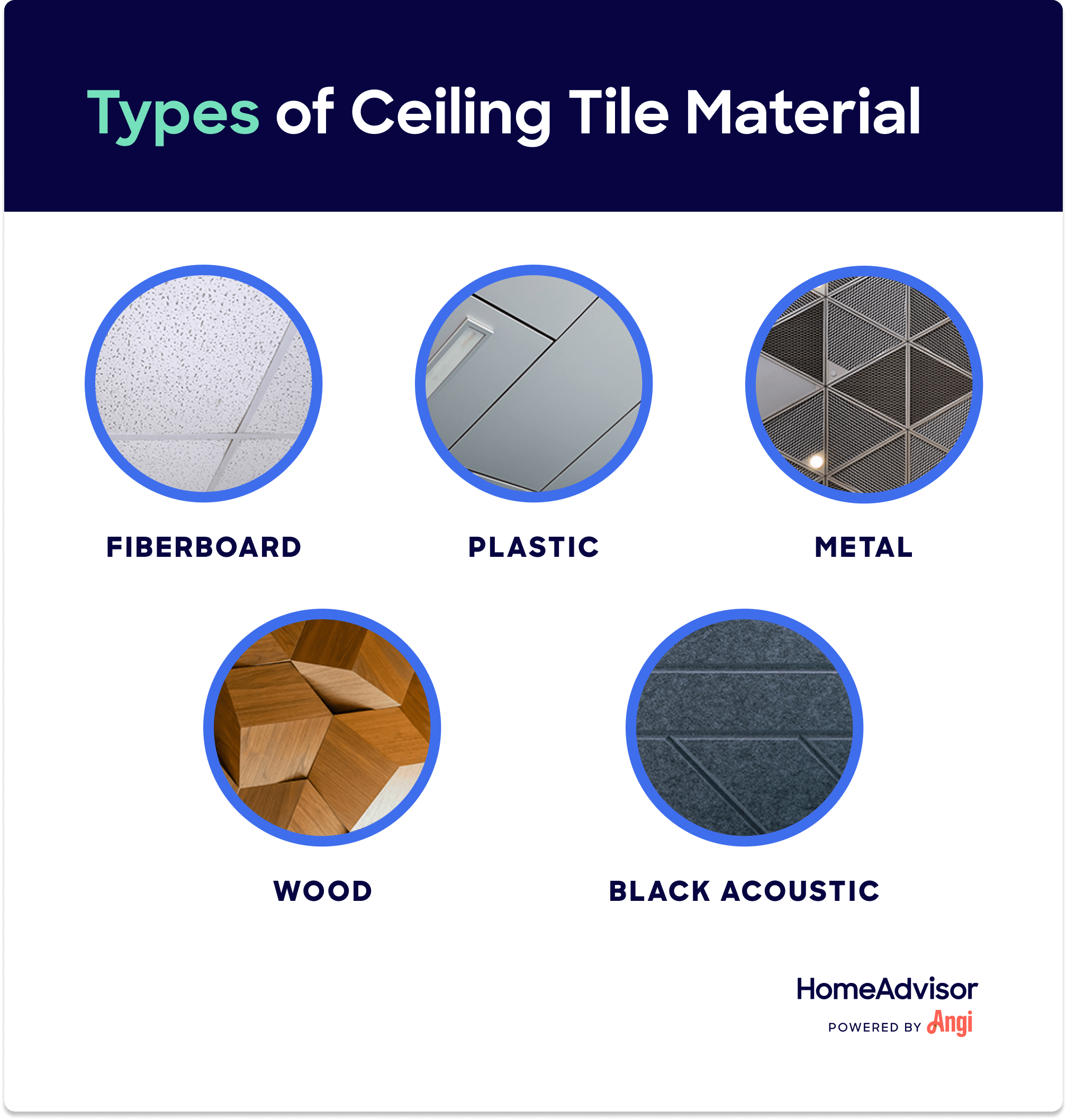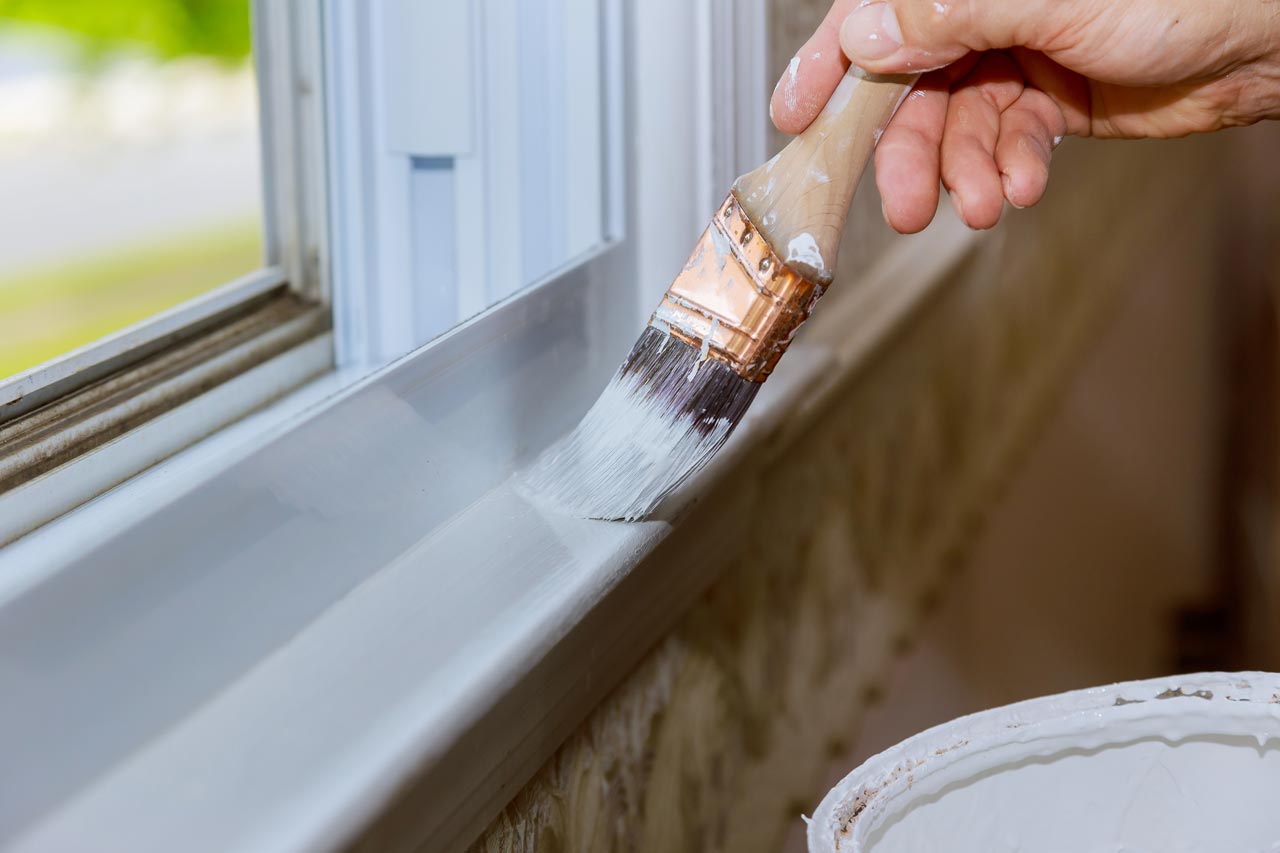How Much Does A Drop Ceiling Cost in 2025?
This project can cost anywhere from $380 to $6,800, so take a look at what could affect this price and get a quote from a pro.


Installing a drop ceiling costs between $1,077 and $3,316, with an average of $2,188.
The cost per square foot ranges from $5 to $28, depending on materials and add-ons.
Factors affecting cost include room size, location, material quality, and additional features.
A drop ceiling can improve aesthetics, hide ductwork, and provide easy access to utilities.
Hiring a professional ensures proper installation and can help avoid costly mistakes.
This article was updated using automation technology and thoroughly reviewed for accuracy by HomeAdvisor Editor Ryan Noonan.
Drop ceilings, also known as suspended ceilings, cost between $1,077 and $3,316, or $2,188 on average, depending on factors such as your location, the size of the room, and the quality of materials used. Expect to pay between $9 and $13 per square foot for standard installation and materials. Additional features like ceiling fans and lighting can increase the final price. Budgeting appropriately and hiring a professional installer can ensure your project is completed efficiently and to a high standard.
Drop Ceiling Cost per Square Foot
Expect to pay between $9 and $13 per square foot for standard drop ceiling installation and materials. Costs can range from $5 to $28 per square foot, depending on factors like tile material, add-ons, and insulation. Adding insulating panels behind the ceiling tiles costs about $2 extra per square foot, and decorative rail covers add up to $1 per linear foot. Grid rails and ceiling tiles vary widely in price, from $1 to $70 per square foot, based on the material you choose.
Drop Ceiling Installation Costs
Expect labor to range from $2 to $5 per square foot when hiring a drop ceiling installer near you to install the grid and tiles. You might also expect to be charged an hourly rate ranging from $30 to $85. Rates tend to be higher for acoustic ceilings and rooms that include special features like lights, fans, switches, and decorative options.
Cost to Install a Drop Ceiling Grid
Installing a drop ceiling grid makes up most of the labor rate. Contractors must take the time to ensure the grid sits perfectly level to get the right look. The installation is more time-consuming in areas with exposed ductwork and pipes.
Labor Cost to Install a Suspended Ceiling
A suspended ceiling and a drop ceiling are the same and cost an average of $3.50 per square foot to install. Other common terms include grid ceiling, drop-in ceiling, dropped ceiling, or T-bar ceiling. While terminology varies by region, they all refer to this functional and versatile ceiling option.
Additional Features
If you're adding or relocating lighting fixtures, vents, or other features, you may need to hire an electrician or HVAC contractor. They can advise if any permits are required. In very large rooms, grids may require additional supporting wires. These extra wires will increase your material costs and labor expenses due to the added installation time.
Ceiling Tile Prices by Material
Prices for acoustic ceiling tiles largely depend on their material and size. Standard fiberboard and plastic are the most affordable, while tiles made from metal and wood cost more because of their high-end, decorative qualities.

Prices for acoustic ceiling tiles largely depend on their material and size. Standard fiberboard and plastic are the most affordable, while tiles made from metal and wood cost more because of their high-end, decorative qualities.
| Ceiling Tile Material | Cost Per Square Foot |
|---|---|
| Fiberboard | $1 – $7 |
| Black Acoustic | $2 – $7 |
| Plastic | $5 – $9 |
| Metal | $12 – $20 |
| Wood | $10 – $70 |
Fiberboard
Fiberboard tiles cost between $1 and $7 per square foot without labor. Because of its affordability and sound-reduction properties, it’s the most common ceiling tile material. However, because fiberboard is made from mineral fibers, it’s prone to stains from moisture, like humidity.
Black Acoustic
Black acoustic tiles look fantastic and cancel out a lot of noise, so they’re a great addition to a gaming or movie theater room. Black acoustic ceiling tiles cost around $2 to $7 per square foot and sell by the case. A box of 16 1-inch-thick, 2-by-2-foot panels might run you $160 or more. A single case often covers 64 square feet, so you’ll need about two for a 120-square-foot room.
Plastic
If you're shopping for plastic tiles to reduce ceiling installation costs, expect to spend between $5 and $9 per square foot. Plastic tiles are versatile and resistant to moisture and stains, but they may not be as attractive as metal and wooden ones. However, DIY installers like plastic tiles because they're easy to hang.
Metal
Metal tiles are one of the most expensive options for a drop ceiling, costing about $12 to $20 per square foot. Attractive designs and installation difficulty drive the prices upward. Homeowners often use metal tiles, also known as tin tiles, as accents instead of an entire ceiling to save money while adding charm.
Wood
Wood ceiling tiles cost from $10 to $70 per square foot. They bring warmth and elegance to the home but are generally the most expensive ceiling tile option. Wooden tiles are attractive and add plenty of design elements to a room, but they’re not ideal for locations with high humidity because of their rot and warping tendencies.
Drop Ceiling Cost Factors
The square footage, labor, and tile material affect your costs, but other factors contribute to the final price. Read below to find out what they are.
Scope of the Work
If the drop ceiling requires installers to work around a furnace, plumbing system, water lines, or venting, you’ll likely need to pay for ceiling repair costs.
Permit and Inspection
Consult your local code enforcement office to determine if a permit is required. Permits for small projects like a drop ceiling start at around $150. Also, inquire about the minimum required space between the existing and new ceiling to ensure proper installation.
Light Panels
Depending on the type of light you choose, you'll pay between $20 and $50 per light panel, which includes the materials and labor. Remember to install all lighting before installing the tiles to avoid extra work and additional costs.
Drop-Out or Melt-Away Tiles
These tiles melt and drop down during a fire, allowing the sprinklers to douse the blaze with water. Add about $100 for each 2-by-4 drop-out tile you need to work with your room’s fire sprinkler system.
Edge Details
Consider using tiles with edge details for about $2 to 4 more per tile. If you prefer texture and visual interest for a project like finishing a basement ceiling, these tiles come in square and angular shapes.
DIY vs. Hiring a Professional
Installing a drop ceiling may appear straightforward, but it's often more challenging than it looks. Precise leveling of the grid is essential, and working atop a ladder increases complexity and safety risks. Mistakes can result in uneven ceilings or safety hazards, potentially costing more to fix. Hiring a professional ensures your drop ceiling is installed correctly and efficiently, giving you peace of mind. To save money without compromising on quality, consider handling demolition yourself or purchasing materials directly.
How HomeAdvisor Gets Its Cost Data
No place is more important than your home, which is why HomeAdvisor connects homeowners with local pros to transform their houses into homes they love. To help homeowners prepare for their next project, HomeAdvisor provides readers with accurate cost data and follows strict editorial guidelines. After a project is complete, we survey real customers about the costs to develop the pricing data you see, so you can make the best decisions for you and your home. We pair this data with research from reputable sources, including the U.S. Bureau of Labor Statistics, academic journals, market studies, and interviews with industry experts—all to ensure our prices reflect real-world projects.
Frequently Asked Questions
Ask the following questions to make sure you know what’s involved and that you’ve hired a good team:
Is your company licensed, bonded, and insured?
What is the best tile size for my project?
What fire rating do my ceiling tiles need?
How long will it take to install the drop ceiling?
What is the height of the finished drop ceiling?
Most residential building codes require a minimum ceiling height of 7.5 feet from the floor to the finished drop ceiling, ensuring adequate headroom and safety compliance. Since requirements can vary by location, consult your local code enforcement office or a professional installer to confirm the specific clearance needed for your project.
Installing a drop ceiling results in a loss of ceiling height ranging from 3 inches to 8 inches. The exact amount depends on factors like the size of the fixtures above, such as ductwork or lighting, and the manufacturer's recommendations for installation. Local building codes also dictate minimum ceiling heights, so it's important to consult with a professional installer to determine the optimal drop distance for your specific space.
Installing drywall costs between $1.50 and $3 per square foot for materials, labor, and finishing—significantly less than the $9 to $13 per square foot average for a drop ceiling. While drop ceilings come with a higher initial cost, they offer greater design flexibility, easy access to utility lines, and are simpler and less expensive to repair. To minimize expenses, consider budget-friendly fiberboard panels, though their appearance may be less appealing to some homeowners.
Drop ceilings offer several advantages and disadvantages.
Pros:
Easy to install and repair
Conceal stains, ductwork, and other unsightly elements
Provide quick access to ducts and wiring for maintenance
Available in various styles to suit your design preferences
Cons:
Reduce ceiling height
Tiles may require replacement after a few years
Less sturdy than traditional ceilings
Installation can be more time-consuming than drywall
Removing a drop ceiling costs between $2 and $7 per square foot, which includes disassembling the rail system and removing tiles. Factors such as ceiling size, accessibility, and disposal fees affect the total cost. If you're removing a drywall ceiling, expect costs of $2 to $4 per square foot. Hiring a professional ensures safe removal and proper disposal, preventing damage to underlying structures.








